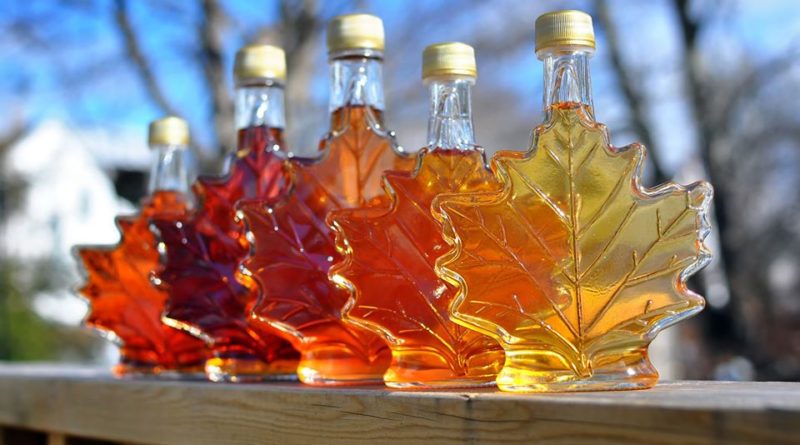Prediction of An Early Spring is Sweet News to Pure Michigan’s Maple Syrup Producers
Punxsutawney Phil delivered some welcomed news on Groundhog Day when he predicted an early spring. To celebrate the arrival of the spring season, the Michigan Maple Syrup Association and more than 30 of its members once again invite the public out to take part in the 8th Annual Michigan Maple Syrup Weekends:
- March 21-22: Southern Lower Peninsula (south of US10)
- March 28-29: Northern Lower Peninsula (north of US10)
- April 4-5: Upper Peninsula
The family-friendly events provide a chance for people to get a firsthand look at how maple sap is collected, boiled down and turned into sweet maple syrup and other maple treats. Many of the farms offer tours of their operation, including tree tapping demonstrations, samples of their products, recipes for the use of maple syrup and local maple syrup products available to purchase. Attendees are reminded to wear boots as mud and snow may still be abundant this time of the year.
In the spring, as the days get longer and the temperatures rise (thanks to more minutes and hours of sunshine), Michigan’s sugar maple trees begin to release “liquid gold” – the clear sap which is boiled down into sweet and delicious maple syrup. The process dates back to the early Native Americans, before Michigan ever became a state.
“Things are definitely running in the lower peninsula and I heard last week that some have started making syrup in the U.P.,” says Kirk Hedding of H & H Sugarbush in Chelsea and President of the Michigan Maple Syrup Association. “Our main concern is the weather during the season. We want those upper 30s to mid-40s during the day and upper to low 20s at night. That’s what keeps the sap flowing throughout the season. This week looks to be a great one for maple sap production.”
Today, Michigan ranks #5 in the nation for maple syrup production, with an economic impact of nearly $2.5 million annually. On average, Michigan produces about 90,000 gallons of syrup per year (it takes 40 gallons of sap to make one gallon of syrup, meaning more than 3.6 million gallons of sap is harvested). Maple sugaring also contributes to the overall $104 billion agricultural and $22 billion tourism industries here in Pure Michigan (see page 3 for additional facts).
Due to its high sugar content of approximately two percent, sugar maple is the preferred tree for tapping, although black maple, red maple, silver maple and ash leafed maple — each with a sugar content of about one percent — can also be tapped to produce syrup. Sugar maple is Michigan’s most common tree species and the northern hardwood forests in which they grow in abundance covers about five million acres. And while some Canadian provinces and New England state area are often recognized as leaders in the maple sugaring industry, Michigan itself has more than three times the number of sugar maples than Quebec or Vermont, meaning the potential for growth is unlimited. Currently, Michigan utilizes less than one percent of its potential maple resources.
As with any agricultural crop, sap changes from farm to farm and region to region, depending on the soil content. The area’s climate and species of trees also play a role in this industry, meaning syrup flavor profiles change from region to region, even within the same state.
Of course, there’s more than just syrup to be enjoyed. Producers of maple syrup are also making candy, ice cream and other sweet treats with their bounty. Even Michigan wineries, breweries and distilleries are crafting beverages with maple sap or syrup for special seasonal offerings.
Information about the farms participating in the Michigan Maple Weekend can be found online at www.MichiganMaple.org.
Additional events of note later in the season include the 80th Annual Vermontville Maple Syrup Festival (April 24-26) and 62nd Annual Shepherd Maple Syrup Festival (April 23-26).
Founded in 1962, the Michigan Maple Syrup Association is a non-profit organization dedicated to the preservation of maple sugaring in Michigan and the promotion of Michigan pure maple products, representing 130 members around the state.
Pure Michigan Maple Syrup Facts
- Michigan ranks 5th in maple syrup production in the United States.
- Average maple syrup production in Michigan is about 90,000 gallons per year (meaning more than 3.6 million gallons of sap is harvested annually).
- Economic contributions of the pure maple syrup industry to Michigan are nearly $2.5 million annually.
- There are an estimated 500 commercial maple syrup producers in Michigan with some 2,000 additional hobby or home-use producers.
- Michigan law requires that processor of maple syrup must be licensed.
- Only about 1 percent of Michigan’s maple forest resource is used in maple syrup production.
- Maple syrup is the first farm crop to be harvested in Michigan each year – starting in February in the southern counties and running well into April in the Upper Peninsula.
Maple Sugaring Facts
- The production of pure maple syrup is the oldest agricultural enterprise in the United States, dating back to the earliest Native Americans.
- Warm sunny days and freezing nights determine the length of the maple season.
- Freezing and thawing temperatures create pressure and force the sap out of the tree – with a very rapid rise in temperature (25 to 45 degrees) to enhance the sap flow.
- While the sugaring season may last 6-10 weeks, the heavy sap may run only 10-20 days.
- The budding of maple trees makes the maple syrup taste bitter. Thus, production ceases.
- A maple tree needs to be about 40 years old and have a diameter of 10 inches before tapping is recommended.
- In an average year, each tap-hole will produce about 10 gallons of maple sap, enough for about a quart of maple syrup.
- It takes approximately 40 gallons of maple sap to make 1 gallon of maple syrup.
- Maple sap is a slightly sweet, colorless liquid.
- Average sugar concentration of maple sap is about 2.5 percent.
- A gallon of standard maple syrup weighs 11 pounds and has a sugar content of 66 percent.
- Maple syrup has 50 calories per tablespoon and is fat-free. It has no additives, no added coloring and no preservatives.
- Maple syrup is classified as one of nature’s most healthful foods.
- Maple syrup has may minerals per tablespoon: 20 milligrams of calcium, 2 milligrams of phosphorus, 0.2 milligrams of iron, 2 milligrams of sodium, 35 milligrams of potassium.
- Maple sap is boiled to remove the water and concentrate the sugars in a process called evaporation.
- In a conventional evaporator one cord of hard wood is required for every 25 gallons of syrup produced.
- Tubing collection systems with vacuum can increase average sap yields approximately 50 percent.
- Maple sap becomes maple syrup when boiled to 219 degrees Fahrenheit, or 7 degrees above the boiling point of water.
- Maple syrup is one of the few agricultural crops in which demand exceeds supply.


